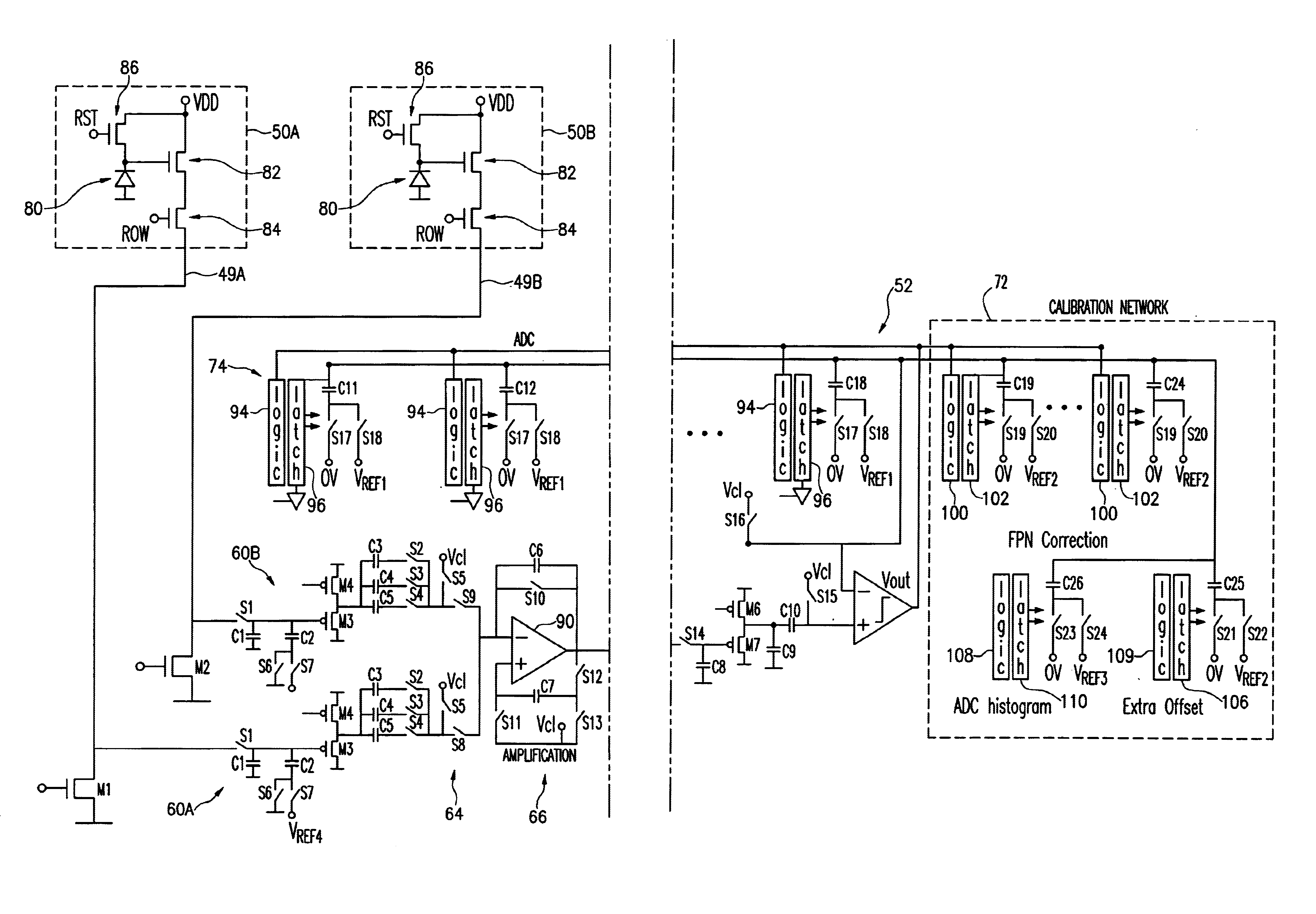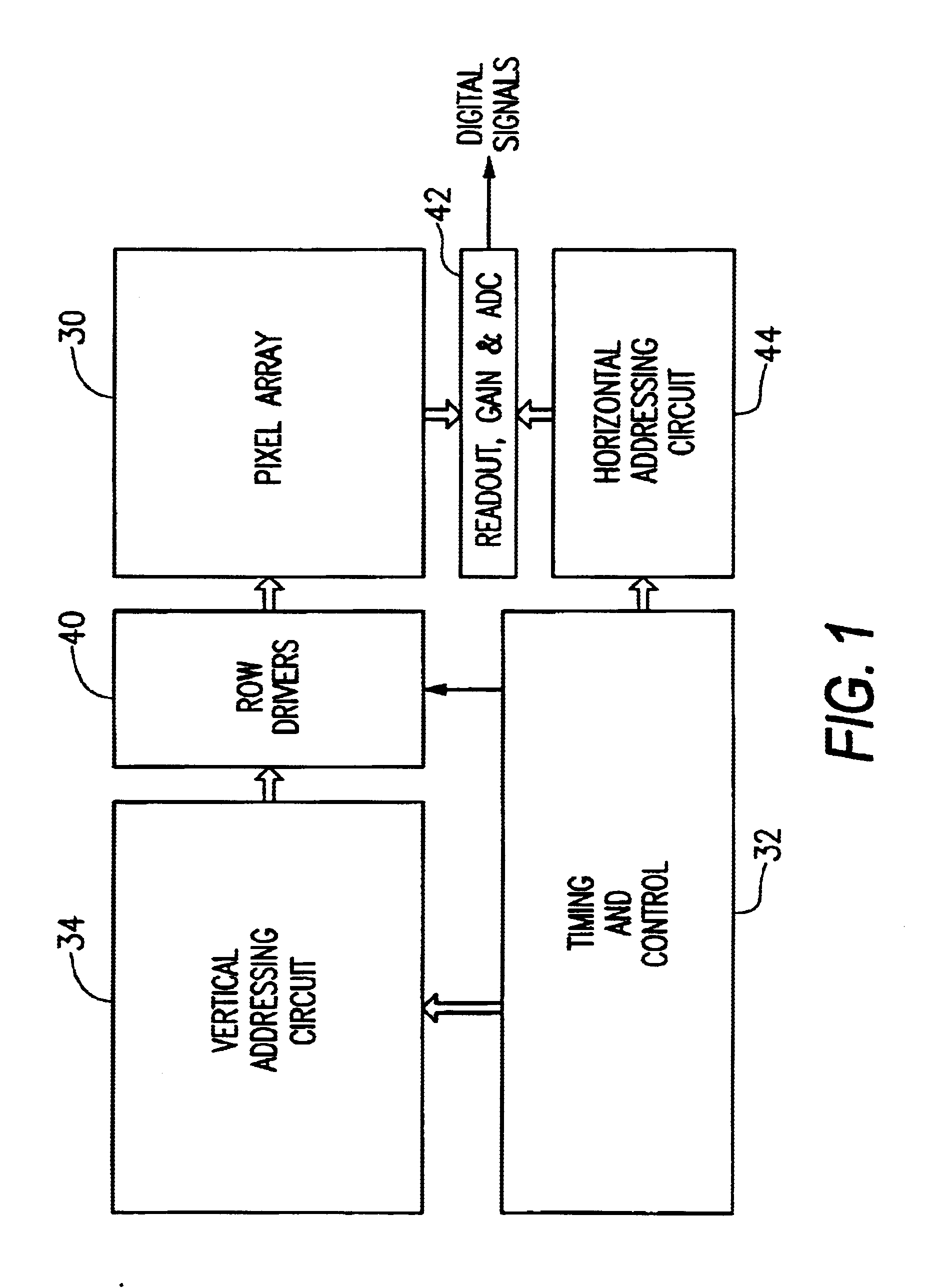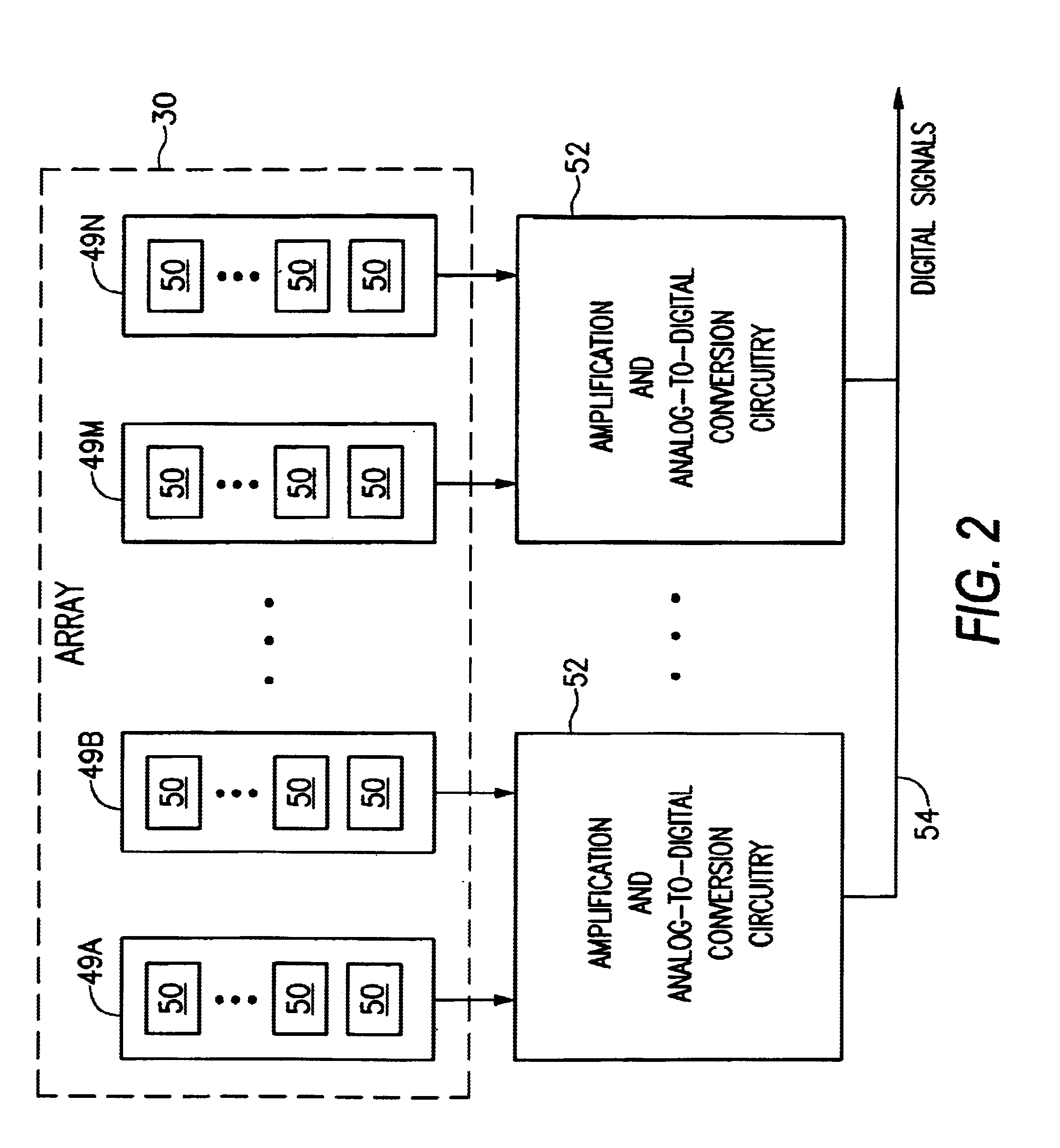Readout circuit with gain and analog-to-digital a conversion for image sensor
a technology of image sensor and readout circuit, applied in the field of image sensor, can solve the problems of low readout rate, low readout rate, and inability to easily adapt to large-scale signal processing, and achieve the effects of reducing bandwidth, reducing various forms of noise from the pixel, and increasing the parallel structure of the overall chip
- Summary
- Abstract
- Description
- Claims
- Application Information
AI Technical Summary
Benefits of technology
Problems solved by technology
Method used
Image
Examples
Embodiment Construction
[0035]FIG. 1 shows an exemplary CMOS active pixel sensor integrated circuit chip that includes an array of active pixel sensors 30 and a controller 32 which provides timing and control signals to enable reading out of signals stored in the pixels. Exemplary arrays have dimensions of 128 by 128 pixels or 256 by 256 pixels, although, in general, the size of the array 30 will depend on the particular implementation. The imager is read out a row at a time using a parallel column readout architecture. The controller 32 selects a particular row of pixels in the array 30 by controlling the operation of a vertical addressing circuit 34 and row drivers 40. Signals stored in the selected row of pixels are read out to circuitry 42 for amplifying the pixel signals and for converting the analog signals to corresponding digital signals. Signals for selecting the digital signals corresponding to a particular column in the array are provided from the controller 32 through a horizontal addressing ci...
PUM
 Login to View More
Login to View More Abstract
Description
Claims
Application Information
 Login to View More
Login to View More - R&D
- Intellectual Property
- Life Sciences
- Materials
- Tech Scout
- Unparalleled Data Quality
- Higher Quality Content
- 60% Fewer Hallucinations
Browse by: Latest US Patents, China's latest patents, Technical Efficacy Thesaurus, Application Domain, Technology Topic, Popular Technical Reports.
© 2025 PatSnap. All rights reserved.Legal|Privacy policy|Modern Slavery Act Transparency Statement|Sitemap|About US| Contact US: help@patsnap.com



